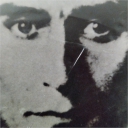Thanks for your reply. It works even with [fidelity 0.8( , though I think I will put in 0.7 just in case.
-
\[helmholtz~\], guess what it is...
-
Hi,
i tried [helmholtz~] and it works great but i need pitch detection for high frequencies which is greater than 17000. I couldn't update [helmholtz~] for detecting high frequencies. How can i disable lo pass filter and detect high frequencies with [helmholtz~]
-
@ryback3 said:
i need pitch detection for high frequencies which is greater than 17000
Sorry, the technique used in [helmholtz~] (autocorrelation) is very precise but not for high frequencies. Certainly not 17 KHz. Pitch of acoustic instruments rarely go above 1 KHz, that's [helmholtz~] default limit but it can go to 2 KHz using message maxfreq. If you want higher, better use an fft based detector like [sigmund~] or [fiddle~].
Katja
-
@katjav said:
@ryback3 said:
i need pitch detection for high frequencies which is greater than 17000
Sorry, the technique used in [helmholtz~] (autocorrelation) is very precise but not for high frequencies. Certainly not 17 KHz. Pitch of acoustic instruments rarely go above 1 KHz, that's [helmholtz~] default limit but it can go to 2 KHz using message maxfreq. If you want higher, better use an fft based detector like [sigmund~] or [fiddle~].
Katja
I tried sigmund~ and set -maxfreq to 22000 and npts to 1024 but i couldn't get pitch value which are greater than 15000 hz, what is the problem.
-
i couldn't get pitch value which are greater than 15000 hz, what is the problem
Not sure what use you have for sounds with pitch so high they are inaudible for most humans, but anyway you could try [sigmund~] with frequency peaks instead of pitch (see it's help file for details). Note that a 15 KHz sound can not have harmonics with standard samplerate 44.1 KHz, or they will be aliased. So you could just as well track the frequency component with highest amplitude.
Katja
-
On a monophonic traditional song audio file (female voice), I tried fiddle~, dfreq~, sigmund~, helmhotz~. With default parameters, the best result I got for far is with [helmhotz~]. Thank you Katja !
-
Hey everyone...I just now getting some time to play with this, and it is indeed pretty interesting in comparison to sigmund~ and fiddle~...I run into the same problems though, in trying to figure out how to filter data...ricky mentioned using [round] and I thought to try that, but I don't seem to have that object, what library is that in?
-
Hey!
[expr rint($f1)]
That'll do it!
Ricky
-
Hello Katja and/or whoever
Sorry for such a low-level question, but I'm not very good with these things.
I downloaded Helmholtz~ and loved it! It worked immediately on my Linux (Crunchbang) laptop. My main audio computer, though (by far, the best I have - and the one I'm using for my current project) is a Mac G5 with a PowerPC processor (got it used for $100!)
And I can't get helmholtz~ to work on it.
Is this because it's made for Intel processors? If so, could I make a ppc version using the LibraryTemplate I just downloaded, on the working Linux system? I've spent a few hours trying to answer this myself.
If it's not possible, that's good to know. I can never tell the difference between my incompetence, and computers not being the magic boxes of fairy tales.
Chris
-
Looking at the makefile with the [helmholtz~] package, I see that it doesn't do a 'fat binary' for OSX, but a native build for the platform (which was Intel Mac 32 bit in my case).
I suspect that the library template makefile does not facilitate cross-compiling. It would be much easier to build on the G5 using the included makefile. However, you may not have developer tools installed on that computer?
Katja
-
I'm afraid I'm in over my head here. I still spend half my time connecting signal outlets to non-signal inlets.
However, I'm happy to give it a try, if I'm trying the right thing. I don't yet know how to "build on the G5 using the included makefile," but I'll try to download and learn. May just end up using sigmund~ for this project.
It certainly seems like a question for another forum now... you guys are all here talking about cool stuff like auditory perception and trombone tracking, and all I can offer is "My cat's breath smells like cat food."
-
@Load074 said:
I don't yet know how to "build on the G5 using the included makefile,"
What do you mean exactly? If you have Apple's developer tools installed on your G5, it should be simple. In the [helmholtz~] project from http://www.katjaas.nl/helmholtz/helmholtz.html, just follow the section 'how to build' in README.txt. Basically it is a matter of typing 'make' on the command line.
However, if you don't know how to compile at all on the G5, you'd have a steep curve to follow. It may even take a while to find developer tools if you don't have them. Still I think it's worth the effort to try, not so much because of [helmholtz~] alone, but because you may find more open source software that you want to compile for it. On recent OSX versions it is no longer possible to compile for ppc, so you may find yourself on your own more often. There happened to be a Pd-list discussion on ppc support not long ago:
http://lists.puredata.info/pipermail/pd-list/2013-10/104676.html
By the way which processor type is in your G5? I could try to produce a fat binary of [helmholtz~].
-
You're on to me. It's true, I don't know, at all, how to compile. And I do plan to learn (or get an up-to-date computer), but I haven't yet. As you said, steep curve... totally worth it... maybe more than I'm able to bite off right now. Self-education via Google is arduous.
My processor is Dual 2GHz PowerPC G5, running 10.5.8. Any assistance is appreciated, but certainly not expected.
-
Hi @katjav! Can the helmholtz~ object output the sinusoidal peaks (frequency and amplitude) of an incoming audio signal?




